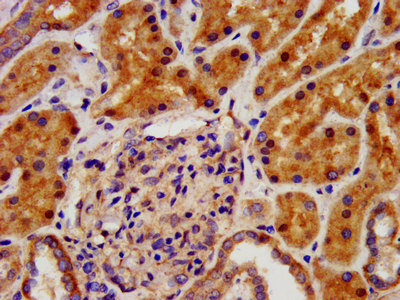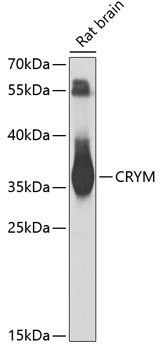
WB analysis of rat brain tissue lysate using GTX64761 CRYM antibody. Dilution : 1:1000 Loading : 25microg per lane
CRYM antibody
GTX64761
ApplicationsWestern Blot, ImmunoHistoChemistry, ImmunoHistoChemistry Paraffin
Product group Antibodies
TargetCRYM
Overview
- SupplierGeneTex
- Product NameCRYM antibody
- Delivery Days Customer9
- Application Supplier NoteWB: 1:500 - 1:2000. IHC-P: 1:50 - 1:200. *Optimal dilutions/concentrations should be determined by the researcher.Not tested in other applications.
- ApplicationsWestern Blot, ImmunoHistoChemistry, ImmunoHistoChemistry Paraffin
- CertificationResearch Use Only
- ClonalityPolyclonal
- ConjugateUnconjugated
- Gene ID1428
- Target nameCRYM
- Target descriptioncrystallin mu
- Target synonymsDFNA40, THBP, ketimine reductase mu-crystallin, 1-piperideine-2-carboxylate/1-pyrroline-2-carboxylate reductase, NADP-regulated thyroid-hormone binding protein, P2C/Pyr2C reductase, mu-crystallin homolog, thiomorpholine-carboxylate dehydrogenase
- HostRabbit
- IsotypeIgG
- Protein IDQ14894
- Protein NameKetimine reductase mu-crystallin
- Scientific DescriptionCrystallins are separated into two classes: taxon-specific and ubiquitous. The former class is also called phylogenetically-restricted crystallins. The latter class constitutes the major proteins of vertebrate eye lens and maintains the transparency and refractive index of the lens. This gene encodes a taxon-specific crystallin protein that binds NADPH and has sequence similarity to bacterial ornithine cyclodeaminases. The encoded protein does not perform a structural role in lens tissue, and instead it binds thyroid hormone for possible regulatory or developmental roles. Mutations in this gene have been associated with autosomal dominant non-syndromic deafness. [provided by RefSeq, Sep 2014]
- Storage Instruction-20°C or -80°C,2°C to 8°C
- UNSPSC12352203

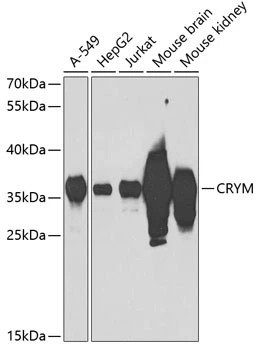
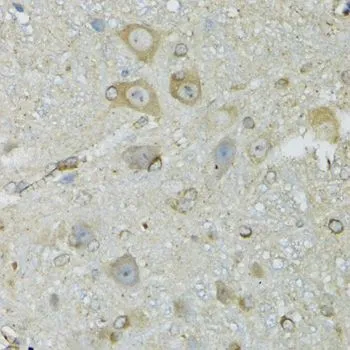
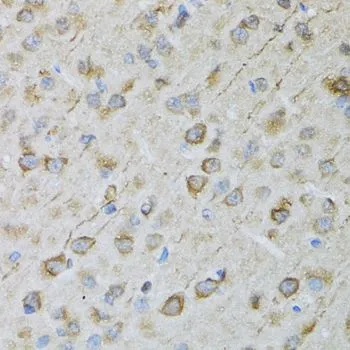
![ICC/IF analysis of COS7 cells transiently transfected with CRYM plasmid using GTX84654 CRYM antibody [1G7].](https://www.genetex.com/upload/website/prouct_img/normal/GTX84654/GTX84654_1173_ICCIF_w_23061420_852.webp)
![ICC/IF analysis of COS7 cells transiently transfected with CRYM plasmid using GTX84655 CRYM antibody [1B5].](https://www.genetex.com/upload/website/prouct_img/normal/GTX84655/GTX84655_1174_ICCIF_w_23061420_389.webp)
